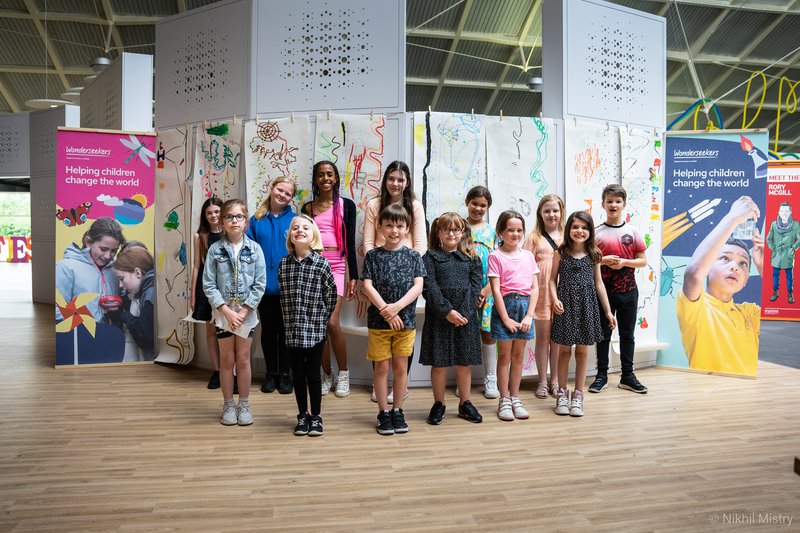Bold Futures: Wonderseekers
20 children from two communities engaged with science and nature through a series of artist-led workshops, providing them with an opportunity to express their fears and aspirations for the planet through art.
So many of our families said what a wonderful experience there children had, we know one of our most shy and quiet YC’s as a result of taking part in this workshops is feeling more confident and being able to talk out loud and express herself. - Commmunity Leader of Eastleigh Young Carers
Who did you work with?
We worked with 20 children aged 5 – 12, across two priority communities. Our first, Leigh Park, is a community with high socio-economic deprivation and a lack of STEM provision. The participants of Leigh Park were mostly female (62%F/38%M) and were joined at workshops by their families. Our second community were a group of children from Eastleigh Young Carers (EYC), whose life is significantly affected by caring for a family member, like a parent or a sibling, who has an illness, disability, mental health or substance misuse problem. All participating Young Carers were female.
Had you worked together before?
Leigh Park is one of our identified priority communities and an area we frequently engage young children and families in science and nature, by working in partnership with local schools and Leigh Park library. A few of the children who participated in the Bold Futures workshops had previously engaged with us at sessions held in the Leigh Park library/schools.
In contrast, EYC were a new community group that we formed a partnership with for this project, as part of our commitment to work with children impacted by disability, illness or impairment. We have built a strong relationship with the leaders of EYC continuing to work together long-term outside of Bold Futures.
Kay McCann, our community partner and artist who led the mark making workshops in session 1 was also a new partner. Kay had vast experience of working with young children and families from varied backgrounds, using art as a tool to help children express themselves – a key aim of our project.
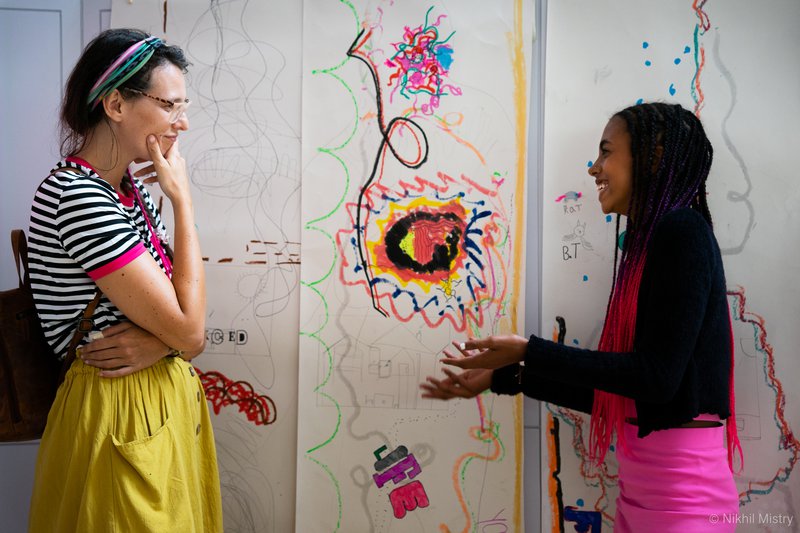
What priorities did you identify with your partner and how did this project meet the longer-term priorities of everyone involved?
Our priorities were building trust with the children, without which, they were less likely to participate and express their views on the environment. Based upon our previous community work, we anticipated some of the children may have no connection to nature or have considered local environmental issues. To overcome this, Kay and our team built a rapport with children through fun, sensory and creative activities that developed relationships and supported children to connect and explore nature.
We’ve strengthened existing relationships such as with Leigh Park library and built new relationships with EYC and the wider Hampshire Young Carers network. We’ve increased our footprint in the community, building awareness of our Charity and created a platform for childrens' voices to be heard on the environment – fundamental as we expand our reach and demonstrate charitable impact. Children involved in Bold Futures have been provided annual passes to our Science Centre, “a lifeline for many families over the Summer” (parent from Leigh Park), to help continue their science engagement; increasing access for disadvantaged children.
Summary of the the aims of the project delivery
Our aim was to provide a platform for children to be heard, whereby they could express their fears and aspirations for the planet. Our third aim was to use this programme as an opportunity to build new long-term relationships with our audiences which would help inform the delivery of our strategy.
“I myself feel exceptionally fortunate that we were able to partner with you on the Wonder seekers project. This opportunity was just incredible for us to be able to offer to our young carers. From the off set of being offered places on the workshop up to the celebration event last night you made it so accessible, inclusive and inspirational...you went above and beyond to ensure the needs of our (very nervous) Young Carers felt comfortable and settled..." - Community Leader at Eastleigh Young Carers
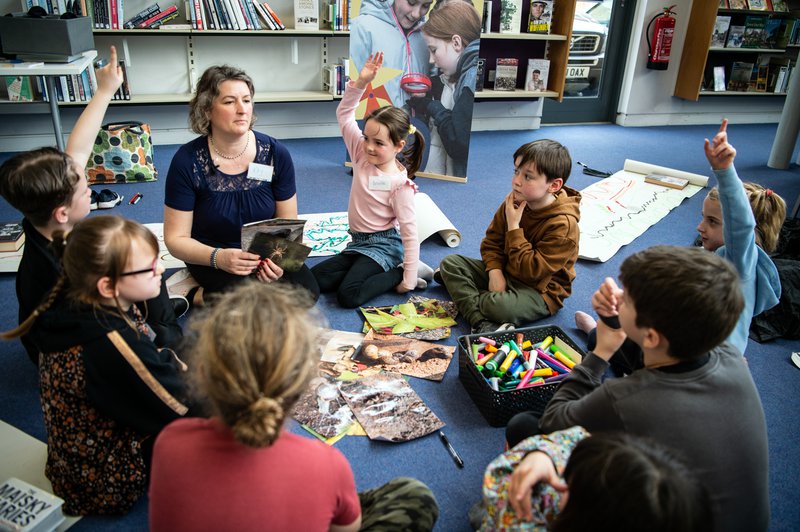
Do you have any online resources or webpages we could link to, to find out more?
- We held a celebration event in July for the children and their families to see an exclusive screening of the films they had created within our planetarium. Our blog post on 20 July shares some of the feedback and links to the films: Local children’s voices heard by thousands this summer | Wonderseekers. Please contact us if you would like a downloadable version of the films.
- Kay McCrann is an artist, researcher and educator. You can find out more about her work here - About mark-making: – Kay McCrann: Drawing artist-researcher-educator investigating multispecies worlds
- Information about the Eastleigh Young Carers - Young Carers - Support for Young Carers in Eastleigh (1community.org.uk)
How co-produced was your programme?
- Information (offer is decided and people join to hear information)
- Consultation (set list of options are discussed, involves listening & feedback to which is most appropriate)
- Deciding together (encourages new and additional options, and joint decision making)
What steps did you take with your community partner in order to reach this level of co-production?
Due to the length of the programme, we provided a framework of information to our community partners outlining what the sessions involved and what the output of the project would be, leaving ownership for children to consult with each other and lead the content. As most communication was conducted by email, this was critical to engaging with leaders of EYC and advertising our programme in Leigh Park so children could decide if they wanted/were able to participate.
Leigh Park workshops were held in their local area, whereas EYC came to our Science Centre for all three workshops. As expected, children in Leigh Park were more forthcoming, possibly due to our ongoing Charity presence in the area. Many of the EYC had come to WSC without having had breakfast, which we addressed and provided to help build a deeper level of trust and connection. It was at this stage we could begin engaging with the children through fun activities, where they organically shared their thoughts and feelings on the environment and began working together with facilitators to construct a storyboard of content to feature in the films.
A similar approach was adopted when beginning conversations with our artist, Kay and film company. We shared project objectives and output from the outset, seeking ideas and expertise on how this was achieved.
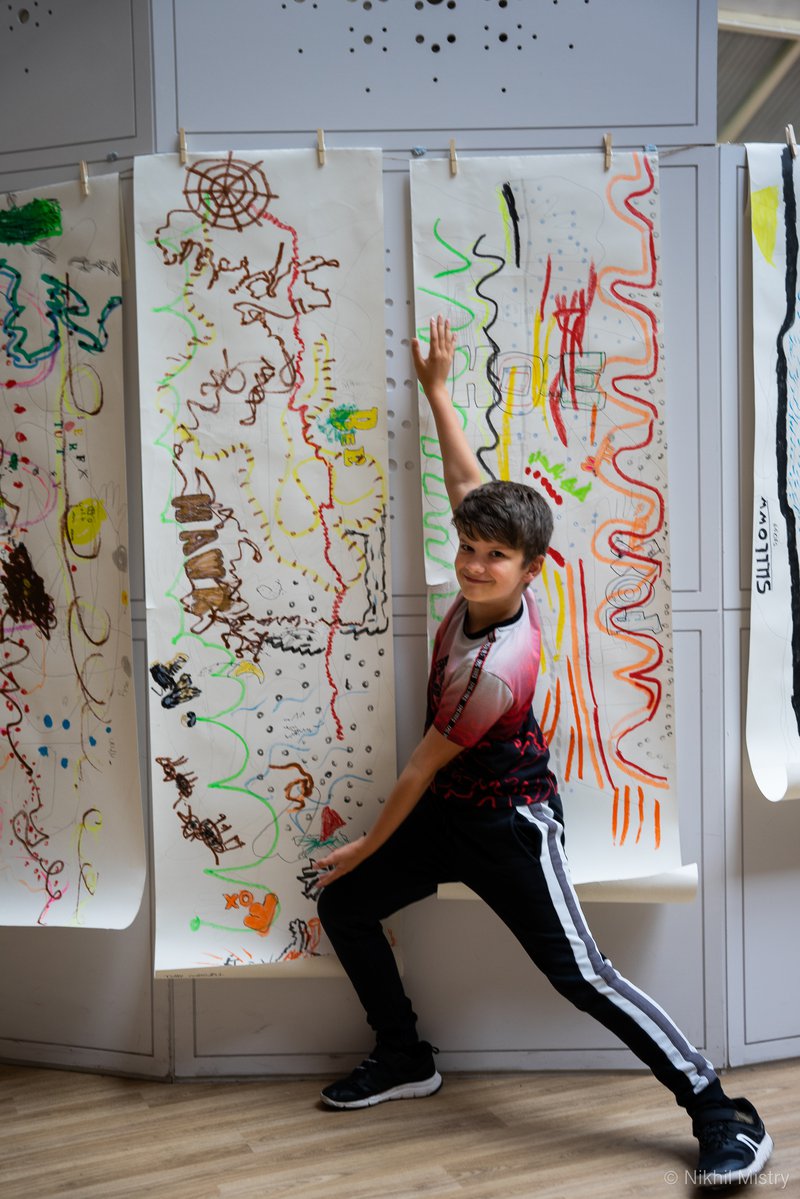
Can you note down some of the benefits and challenges to working this way?
The approach we took was based on the time constraints we had. As a shorter-term project, our experience was that we needed to provide a framework for delivery, being clear from the outset about what the format of the sessions were and what the output would be. Although this streamlined the process, it does impact the genuine level of co-creation a project provides. The time constraints were further highlighted when recruiting participants – initially approaching Winchester Young Carers, but finding they had other commitments. We took our search wider, contacting Hampshire Young Carers of which Eastleigh Young Carers came forward. Whilst a challenge at the time, the benefit is that we have developed two ongoing relationships; in August 2023 we hosted another 11 children from EYC at WSC and have plans for Winchester Young Carers to visit in the Autumn.
Consulting with children and letting them guide the content of the films meant we had unexpected outcomes, but by giving them ownership helped build trust which was an essential element of our project. Whilst unexpected outcomes could be seen as a challenge, the benefit to us was it provided enlightening perspectives and feedback that Wonderseekers haven’t considered e.g., the value of art for children, differing starting points in agency/skills which informed the development of our long-term evaluation matrix.
What was the STEM link?
The programme focused on nature connectedness, touching on environmental science topics such as ecosystems. Children practiced building creative skills and science enquiry skills both through our workshops and the subsequent experiences at our Science Centre.
What happened?
The EYC were a very quiet group to begin with. Once we learned that many of them hadn’t eaten breakfast and had had a long journey to get to the centre, we gave them breakfast and they noticeably had more energy to participate. The workshops encouraged them to use their voices to talk amongst themselves as well as share ideas with the group. Grace was particularly quiet throughout the sessions, we noticed she had limited discussions with other young carers and didn’t share anything with the group. However, she was very creative in the activities and would come back to each of our three sessions, so our team assumed she was interested in the content. Working 1-1 with her EYC leader, she was able to articulate which sections of the film she wanted to be involved with which helped build confidence and ownership. All the children were given the option of being filmed individually, in pairs, or in a group. Grace took part in all aspects of the filming; including an individual piece to camera where she described her likes and dislikes about being outside in the natural environment. It was incredible to see Grace’s journey throughout this project and her confidence grow with using her voice, reiterated by feedback from her parents and YC leader.
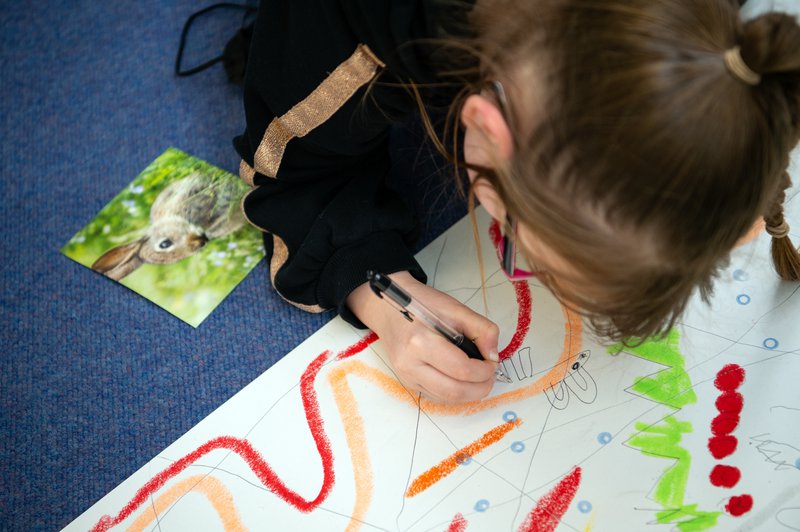
What challenges might lie in wait for someone wanting to replicate this project
We felt this type of project wouldn’t have worked within schools. Smaller groups helped create safer spaces and build trust with the children, which in our experience are much harder to create within a school environment. In addition, we would have struggled to involve schools as there was no direct link to the national curriculum.
Our experience was that participating children had differing levels of understanding about the environment. Whilst children in Leigh Park had a greater understanding of the environment, the challenge we faced was pitching activities at the right level to accommodate all needs. A longer delivery period would have enhanced the project, allowing us to gain a better understanding of how much children knew about the environment ahead of the workshops, develop more suitable activities and help move children through our journey model.
Were there any surprises?
This project was the first time we had used art to complement scientific ideas. Given the age of the children we were working with, it created a safe communication tool to build children’s awareness of the natural world and engage an audience who had very little interest/connection of science and nature. We’ve developed a proposal to continue working with our community partner, Kay, incorporating ‘mark making’ activities into our ‘Sound of Biodiversity’ project funded by ASDC/Museums Association.
Secondly, we had expected all our participants to come from their respective communities. One parent brought her son to the Leigh Park sessions from Petersfield, a relatively affluent area of Hampshire. Explaining the barriers she faced to us, it demonstrated hidden underserved audiences within affluent areas that Wonderseekers are not necessarily accessing, which has influenced our thinking for future community engagement.
How did you capture/measure the impact for this project?
Our evaluation methods included the following:
- Creating a pre and post workshop questionnaire for our community partner.
- Conducting observational analysis with the children during workshops. The template we used was developed with our external evaluation consultant, Jen de Witt.
- Creating a post workshop questionnaire for children and parents of Leigh Park. These were completed at the celebration event due to the nature of the questions asked.
- Creating an experience meter sticky dot sheet for parents in Leigh Park to share their thoughts on the climate crisis.
Where is the long-lasting change?
Our organisational understanding of our audiences has vastly improved; working with our external evaluation consultant we’ve significantly developed our evaluation strategy, forming an impact evaluation toolkit to help us understand children’s starting points in relation to both their level of scientific enquiry skills and environmental agency. The purpose of this is to assess and monitor the progress of children throughout our future community engagement, plotting data onto a progressive journey matrix that will help demonstrate our charitable impact.
Our partnership with our artist, Kay, continues as we develop the prospect of having an artist ‘in residence’ to work with our primary age audiences in an empowering way. We have begun to embed the significance of this into our organisation culture, with Kay recently attending Wonderseekers to run a staff ‘mark making’ session. Kay has trained a small selection of staff in delivering these sessions so we can embed sessions such as these into future community engagements.
Did this project impact the future sustainability of your organisation?
‘Charity creditability’ is an identified risk of our Charity – through Bold Futures, we’ve established a progressive journey matrix that will help demonstrate our charitable impact, increasing future funding opportunities.
We’ve reduced our risk of becoming obsolete; the creation of the films enables us to live our value of being bold and amplify the importance of children’s voice and participation in environmental policy, showcasing films to community leaders, political figures, and environmentalists as part of a wider communication plan. This includes displaying the films as part of a new interactive in the Science Centre this Autumn. Visiting children will be able to watch the film and be able to share their thoughts and feelings. The interactive will be located within our wider ‘Our Place on Earth’ exhibition due to open in 2024, aiming to listen to children’s authentic voice and collect important feedback on their thoughts, feelings and attitudes towards the natural world and the nature crisis we are facing. To complement the interactive, we’ll introduce our ‘Say No to Nature’ workshop in the Autumn, encouraging children to share experiences of their ‘natural world’ without using the word nature. Using principles of mark making, descriptive words will be hand printed, forming a wall of illustrative word clouds that redefine ‘nature’.
